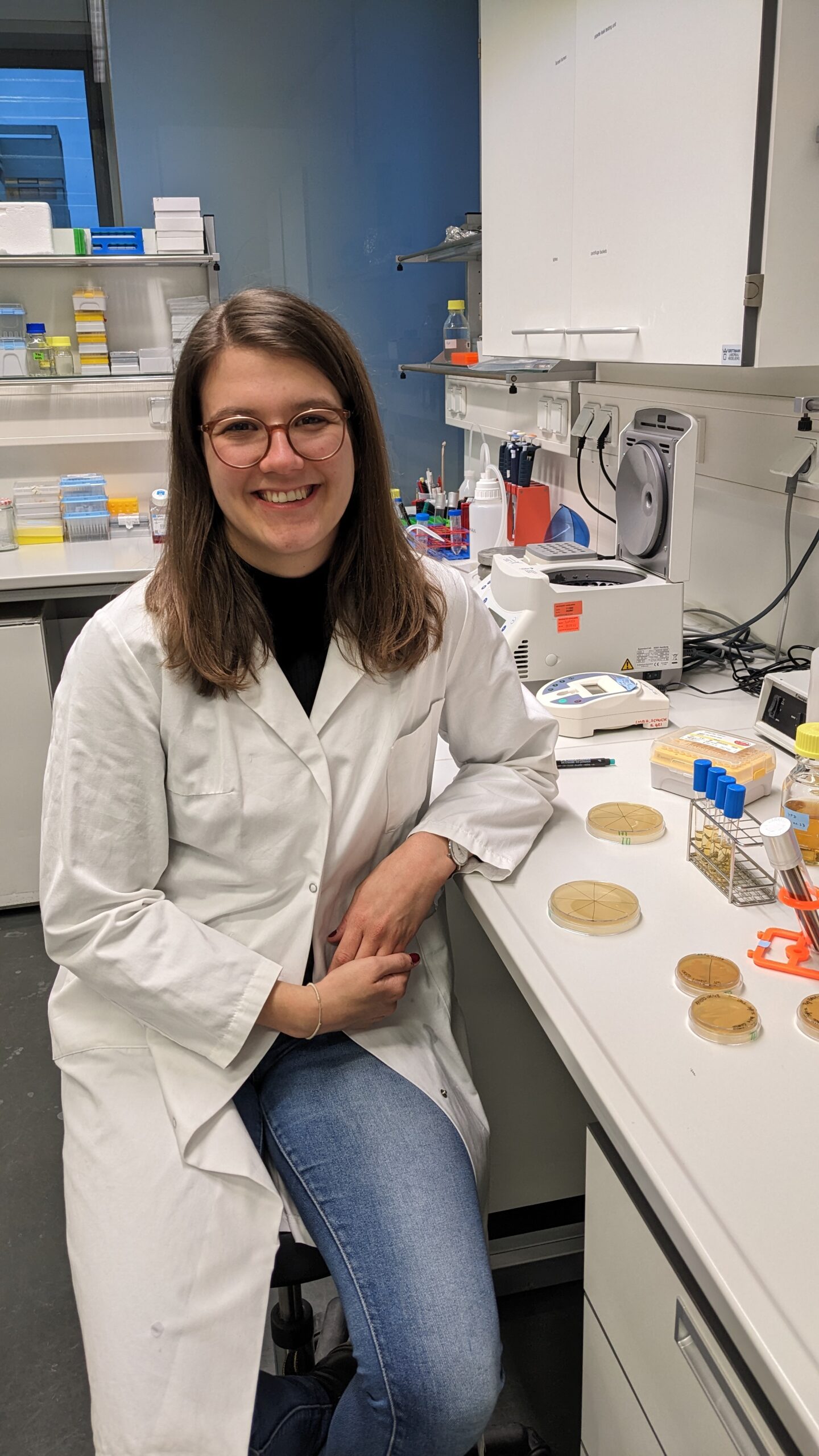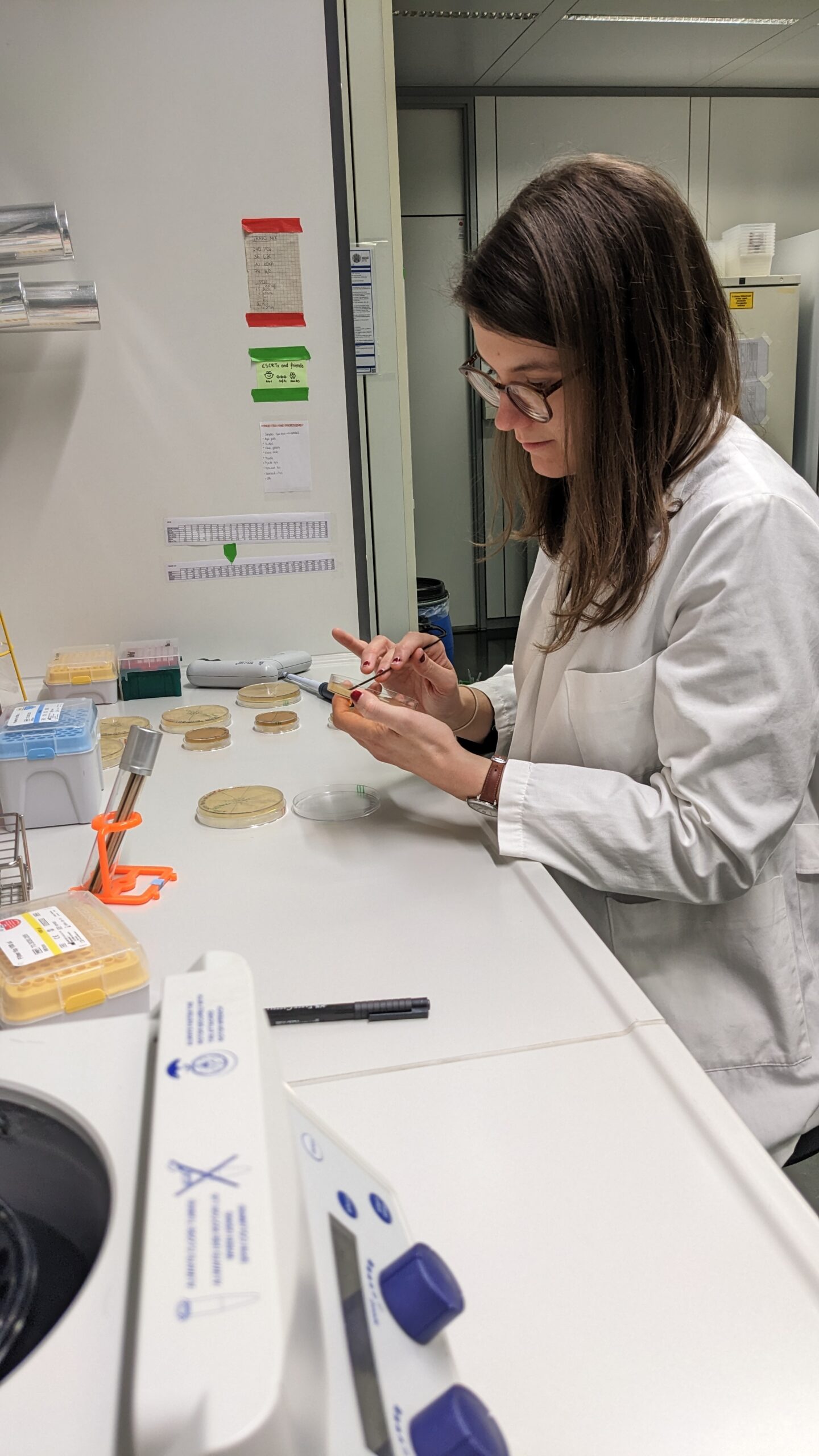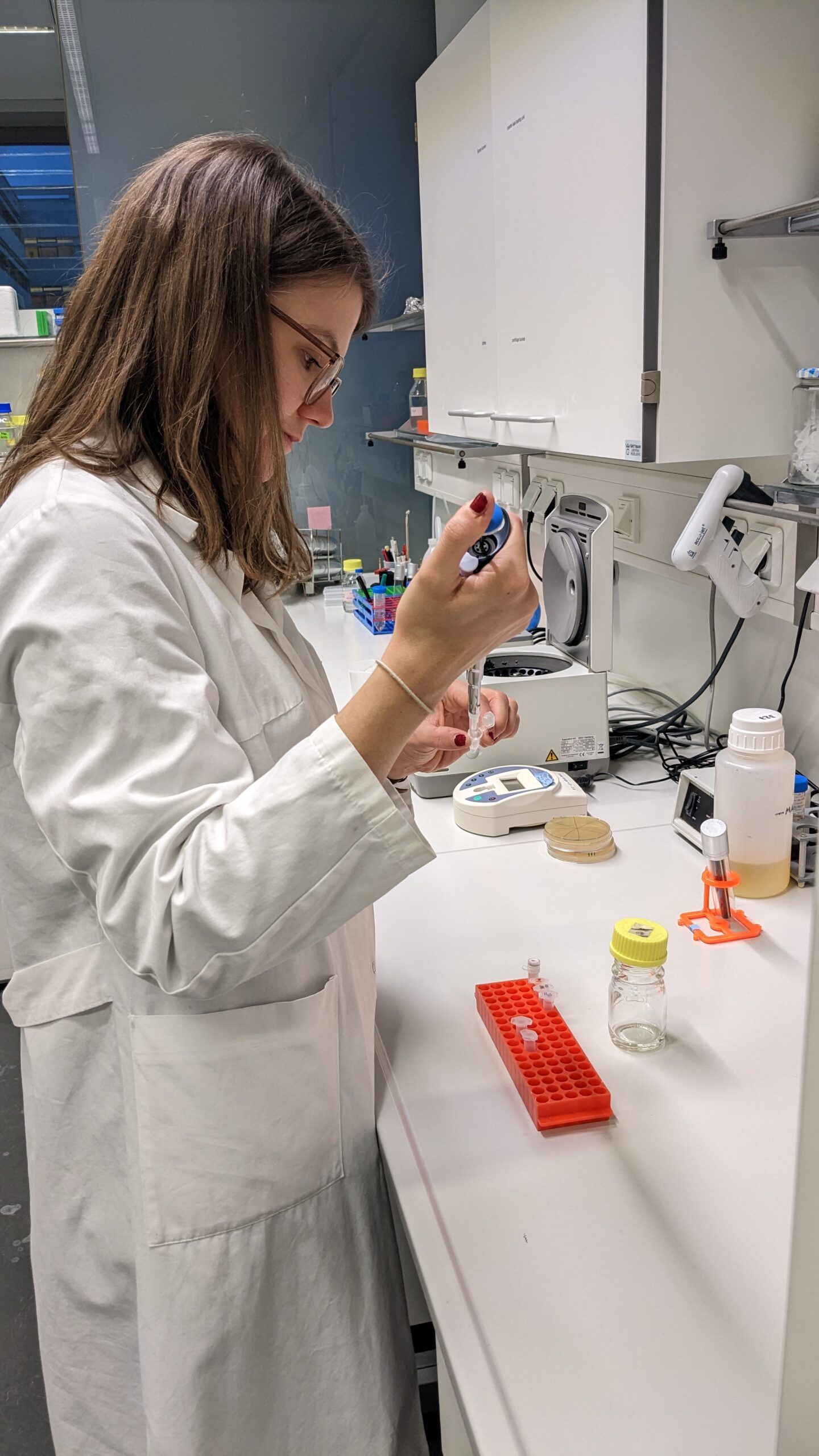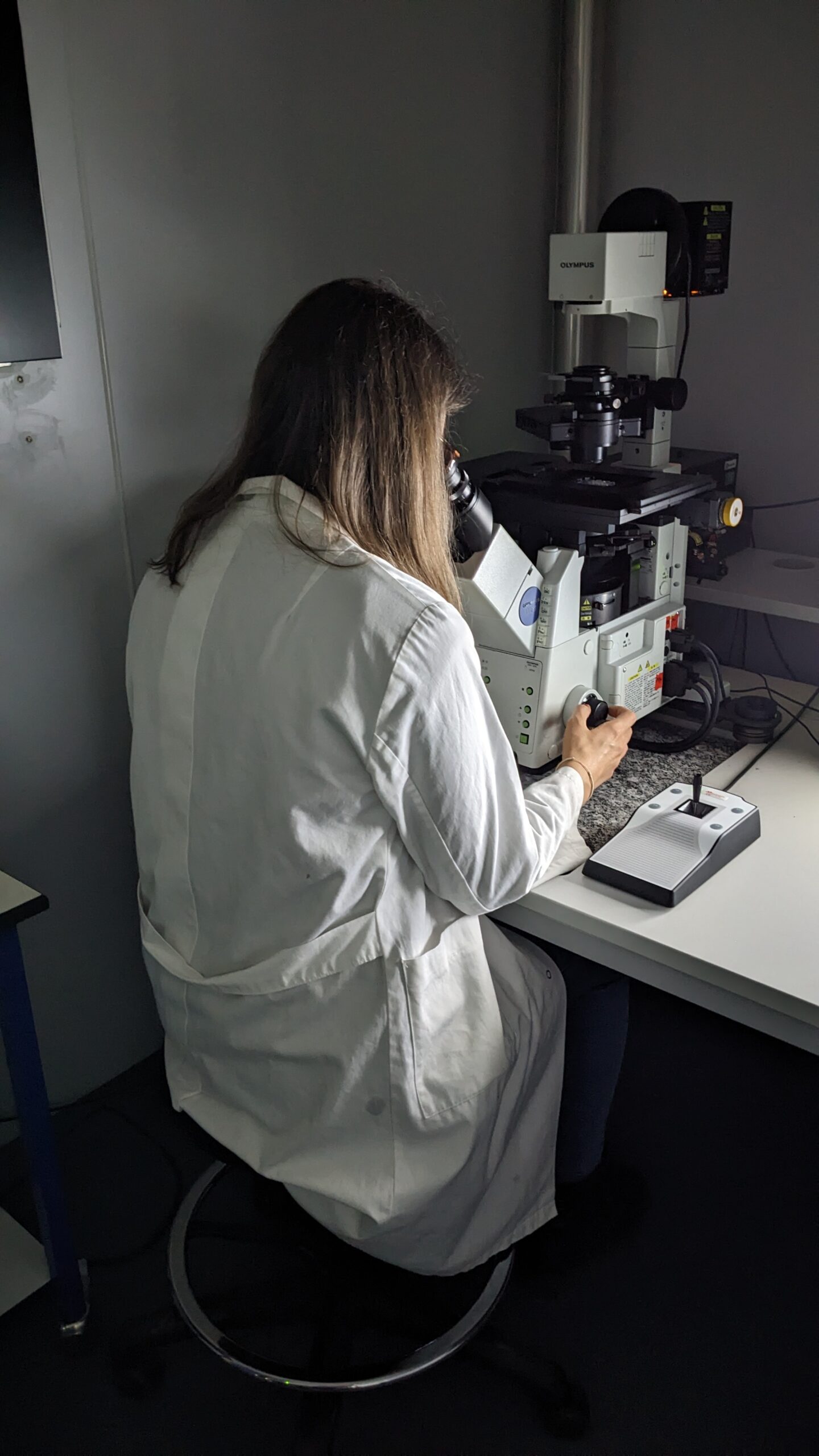BACK TO RESEARCH WITH IMPACT: FNR HIGHLIGHTS
Did you know cells can get stressed? This can be caused by changes in their environment, like a rise in temperature, or low availability of nutrients. These conditions impair functions within the cells and threaten their survival. While cells have stress management techniques, these don’t always work properly and in these cases have been connected to neurodegenerative diseases, cancer and diabetes. Researchers are using baker’s yeast to better understand these stress responses and their potential as drug targets.
Yeast cells are surprisingly similar to human cells, but less complex, making them a great study object to understand biological processes.
“In my PhD project, I study these cellular stress responses and especially those affecting one particular compartment in the cell: the endoplasmic reticulum (ER). For this, I work with baker’s yeast, a single-celled fungus,” explains cell biologist Lis Albert.
Basic research in yeast and human cells has enabled a great deal of insights on stress responses at the ER. Researchers have been able to identify several different ways in which cells deal with stress and many of the proteins that are involved. They also learned a lot about how the different mechanisms are regulated and how they work together: Defects in stress responses at the ER have, for example, been connected to neurodegeneration, diabetes and cancer.


Knowledge about yeast cells can be transferred to human cells
“Researchers understand more and more about how misfunction of these pathways causes or aggravates those diseases. Over the last decade, these findings were used as a basis to develop small molecules that target these stress response pathways.
“Eventually, the knowledge gained from my research in yeast can be transferred to similar biological processes in human cells. And with a better understanding of how endoplasmic reticulum(ER) stress responses work, it is easier to study what goes wrong in related diseases, such as diabetes or Alzheimer’s,” explains cell biologist Lis Albert
Stress response pathway: Potential drug targets
Researchers have started studying the ER stress response mechanisms as potential drug targets, generating small molecules targeting different steps of these pathways. Some compounds have been made available for therapeutic purposes, most of them are still in preclinical development and are yet to be turned into drugs – agents that can safely be administered to patients.
“A major difficulty in making these small molecules into actual drugs is that we do not fully understand their mechanisms of action.”
“Before a compound can be used for any therapeutical purpose, researchers have to figure out in detail how that compound interferes with the stress responses in cells and which possible off-target effects it might have. Since there are several different stress response mechanisms working together in complex ways within the cells, this often turns out to be a difficult endeavour.”


Eyes on a novel stress response
In her research, cell biologist Lis Albert is studying a novel stress response at the endoplasmic reticulum (ER) in yeast cells, that has not been described yet.
“During stress conditions, a certain group of proteins moves to the ER. With my research, I want to find out which proteins are involved in this and what role they play within the complete stress response of the cell. The more we know about the different stress responses and how they collaborate to ensure cell survival, the better we can understand the modes of action of drugs and find new therapeutical targets.”
The cell biologist has been able to identify several proteins that are important for this novel stress response and is starting to unravel how they interact with each other.
“I also gained a better understanding of which conditions trigger the stress response. Moreover, our results hint at a possible role of this process in supporting an essential function of the endoplasmic reticulum and thus protecting it during stress conditions.”
Lis Albert is an AFR PhD researcher at the University of Heidelberg. Follow her Instagram @the.stressed.yeast for more updates on this research!
All photos by Lis Albert




More about Lis Albert
u003ch4u003eDescribing her project in one sentenceu003c/h4u003ernu003cemu003e“In my PhD project, I study the stress management techniques of yeast cells.”u003c/emu003ernu003ch4u003eWhy she became a researcheru003c/h4u003ernu003cemu003e“Since I have always been curious about how cells function on a molecular scale, I went to study molecular biology in Heidelberg. I am fascinated by how the smallest components work together in complex and elaborate ways to create functioning cells. Therefore, the field of cellular stress responses struck me as well, since it explores all the intricate mechanisms that cells have developed to ensure their survival in difficult conditions. u003c/emu003ernrnu003cemu003e“During my studies, the outstanding research landscape in Heidelberg has allowed me to gain insights into this field within several different labs. Eventually I joined the Schuck lab to work on ER stress responses for my Master thesis and then stayed for my PhD.”u003c/emu003ernu003ch4u003eWhat she loves about scienceu003c/h4u003ernu003cemu003e“I love science because it allows me to explore biological questions that no one has answered so far. I get to explore the inner workings of tiny cells and discover new aspects that have not been observed before. u003c/emu003ernrnu003cemu003eWhat I love most about research is the collaborative aspect: every scientist works on their own detailed biological question, but taken together the added findings from all the people within a research group, and in turn every group within each field, constantly push the boundaries of our collective knowledge. In the end, every researcher adds their own small puzzle piece to the bigger picture and I am excited to add mine.”u003c/emu003ernu003ch4u003eWhere she sees herself in 5 yearsu003c/h4u003ernu003cemu003e“Currently, I can imagine myself working in the field of science communication after my PhD. I’ve always been interested in finding creative ways to explain and visualize my research. Even more so, during the Covid pandemic, I realized how important the proper communication of science to the general public is. The amount of mistrust towards scientific findings about the virus or towards therapeutical developments such as the RNA vaccine have struck me. Thus, I want to help make science more accessible to everyone and create awareness on how the scientific process and research work, since I believe this helps to build more trust in science within our society.”u003c/emu003e
Related highlights
Spotlight on Young Researchers: Towards fair health for all
Access to essential health services is considered normal in high-income countries, while they are out of reach for many in…
Read more
Spotlight on Young Researchers: Improving protein folding prediction with statistics
Proteins are the building blocks of life: they play an important role in metabolism, immune defence and DNA replication. Their…
Read more
Spotlight on Young Researchers: Building AI tools to help fight disease
AI developments have led to improvements in disease research by enabling new approaches in the study of genes, molecules and…
Read more
Spotlight on Young Researchers – Revisited: From Luxembourg, to Cambridge, France, and an ERC grant
“Would matter be perfect, it would be boring” says Guillaume Nataf, who has an oozing passion for physics and teaching…
Read more
Spotlight on Young Researchers: Advancing ecosystem monitoring with remote sensing and innovative models
The health of terrestrial ecosystems is intricately linked to the sustainability and stability of society: forests, grasslands, and cropland, play…
Read more
Spotlight on Young Researchers: Unravelling the role of calcium signalling to overcome melanoma drug resistance
Cutaneous melanoma is the most serious type of skin cancer and the sixth most frequent cancer in Europe. Despite progress…
Read more